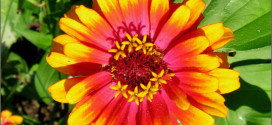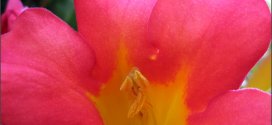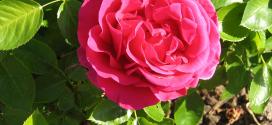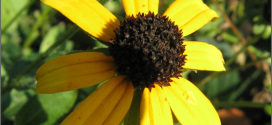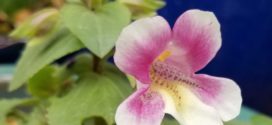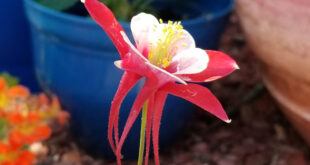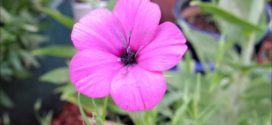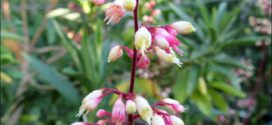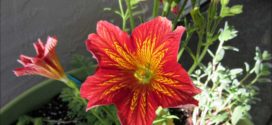Zinnias bloom in vivid colors from summer until frost, are a snap to grow from seed, and attract birds and butterflies to your Sunnyvale yard. A rainbow of color options. They come in every eye-catching hue except true blue, so you can match them with your favorite perennial or annual flowers, foliage plants, and herbs. A height for every site. …
Read More »Flowers
Red Trumpet Vine
Red Trumpet vine has lots of pretty red flowers. I am warning you that it is an aggressive climber. You can see an example at the intersection of Matilda and Sunnyvale-Saratoga Road. Another example is on the south side of Sunnyvale-Saratoga Road past Fremont just past the Falefal-stop restaurant. I have a plant growing in a 3-inch wide trench and …
Read More »Carpet Rose
Carpet Roses need no spraying, no staking and just a simple snipping to shape annually. (I recommend feeding them once or twice a season with time release fertilizer so they have the nutritional resources to produce huge volumes of blooms over the entire growing season.) The Carpet Rose is an excellent low maintenance plant for the Sunnyvale garden.
Read More »Black-Eyed Susan
Black-eyed Susan, Gloriosa Daisy, Yellow Ox-eye Daisy. I grow it as an annual. Black-eyed Susans (Rudbeckia hirta) are native to North America and one of the most popular wildflowers grown. They tend to blanket open fields, often surprising the passer-by with their golden-yellow beauty. Members of the sunflower family, the “black eye” is named for the dark brown-purple centers of …
Read More »Mimulus naiandinus ‘Mega’
Abundant REALLY LARGE fanciful blooms appear Spring thru Summer on this new “Monkey Flower” variety from Chile. Twice the size of the original species (2” top to bottom), ‘Mega’s’ creamy white flowers are blushed cherry & garnished with a yellow throat & showy spots. Dark branching stems, refined blue-green foliage & a bushy 20” high & wide form completes the …
Read More »May in Our Sunnyvale Garden – 2021
May in our Sunnyvale garden is always full of flowers and growth. We had over 60 flowering plants plus fruit and vegetables.
Read More »Pink German Catchfly
Pink German Catchfly (Viscaria oculata) is a pretty annual. Each 1-inch flower has five petals around a dark eye. Ours started blooming May 20. They bloom for about 4 months. The common name “catchfly” is used because the stems secrete a sticky liquid that traps small insects. The flower has been in British gardens since the 1840s. No flower seed …
Read More »Coral Bells
Coral Bells (genus Heuchera) are a great foliage plant. The leaves are often large and heart-shaped or rounded, and many are variegated or ruffled. Starting in late spring, graceful, bell-shaped flower clusters open, carried on spikes that grow about two feet tall. Because these North American natives are evergreen (USDA zones 4 – 9), they bring year-round interest to the …
Read More »Salpiglossis ‘Royale’
Salpiglossis: a name that just rolls off the tongue. Which it should since the genus name comes from the Greek words sappinx meaning trumpet and glossa meaning tongue with reference to the elongated trupet-shaped flowers. It is a spectacular flower. I don’t know how I missed this flower over the years. Many salpiglossis are hybrid cultivars that are primarily derived …
Read More »Columbine
Intense, dark rosy pink outer petals contrast beautifully with white centers on 2” wide, long-spurred blooms. Makes a great cut flower! Its vigorous upright, airy habit make it a nice addition to woodland gardens, sunny rock gardens, and cottage gardens. 2’x2’ when in bloom, with flowers borne on tall branching stems held about 1’ above showy, lacy foliage. Like its …
Read More »